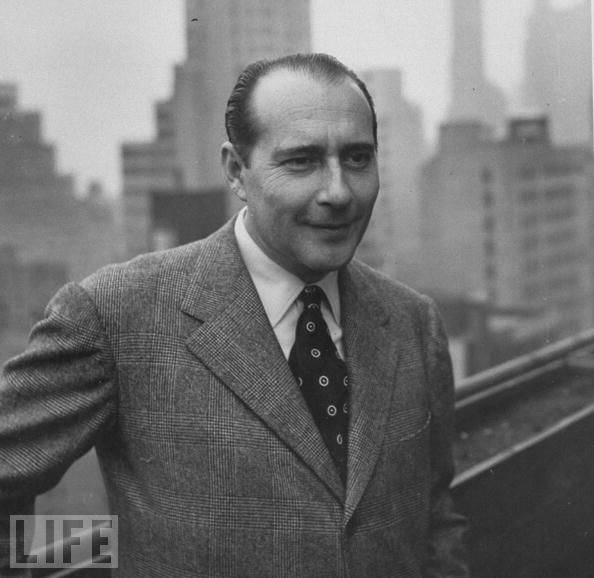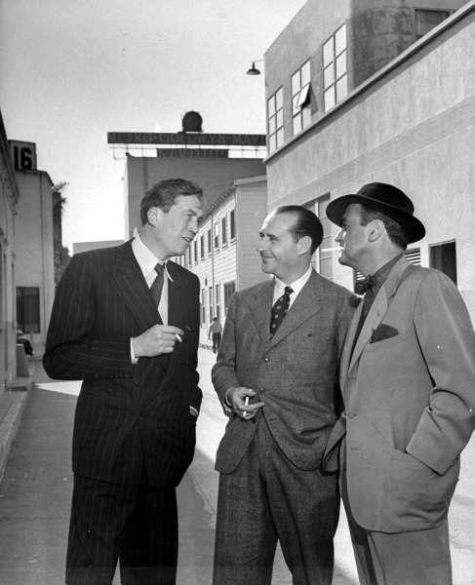<Back to Index>
- Jurist Andrea Alciato, 1492
- Film Director Roberto Rossellini, 1906
- Admiral Niels Juel, 1629
PAGE SPONSOR
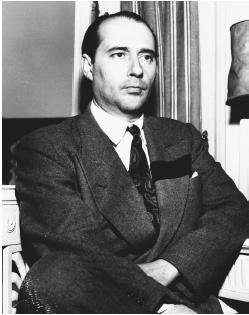
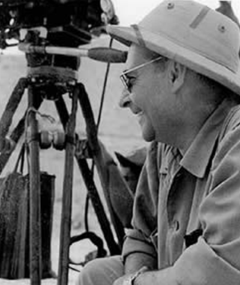
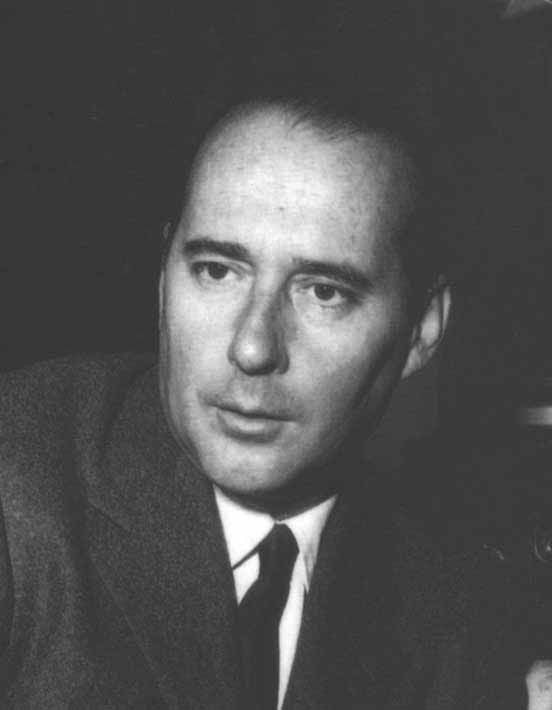
Roberto Rossellini (8 May 1906 – 3 June 1977) was an Italian film director. Rossellini was one of the directors of the Italian neorealist cinema, contributing films such as Roma città aperta (Rome, Open City 1945) to the movement.
Born in Rome, Roberto Rossellini lived on the Via Ludovisi, where Benito Mussolini had his first Roman hotel in 1922 when Fascism obtained power in Italy. Rossellini's father built the first cinema in Rome (a theatre in which films could be shown), granting his son an unlimited free pass; the young Rossellini started frequenting the cinema at an early age. When his father died, he worked as a soundmaker for films and for a certain time he experienced all the accessory jobs related to the creation of a film, gaining competence in each field. Rossellini had a brother, Renzo, who later scored many of his films.
On
26 September 1936, he married Marcella De Marchis (17 January 1916,
Rome – 25 February 2009, Sarteano), a costume designer. This was after
a quick annulment from Assia Noris, a Russian actress
who worked in Italian films. De Marchis and Rossellini had two sons:
Marco Romano (born 3 July 1937 and died of appendicitis in 1946), and
Renzo (born 24 August 1941). Rossellini and De Marchis separated in
1950 (and eventually divorced). In 1937, Rossellini made his first documentary, Prélude à l'après-midi d'un faune. After this essay, he was called to assist Goffredo Alessandrini in making Luciano Serra pilota, one of the most successful Italian films of the first half of the 20th century. In 1940 he was called to assist Francesco De Robertis on Uomini sul Fondo. His close friendship with Vittorio Mussolini, son of Il Duce, has been interpreted as a possible reason for having been preferred to other apprentices. Some authors describe the first part of his career as a sequence of trilogies. His first feature film, La nave bianca (1942) was sponsored by the audiovisual propaganda centre of the Navy Department and is the first work in Rossellini's "Fascist Trilogy", together with Un pilota ritorna (1942) and Uomo dalla Croce (1943). To this period belongs his friendship and cooperation with Federico Fellini and Aldo Fabrizi. When the Fascist regime ended in 1943, just two months after the liberation of Rome, Rossellini was already preparing Roma città aperta (Rome, Open City 1945).
Fellini assisted on the script and Fabrizi playing the role of the
priest, while Rossellini himself produced. Most of the money came from
credits and loans, and the film had to be found on the black market. This
dramatic film was an immediate success. Rossellini had started now his
so-called Neorealistic Trilogy, the second title of which was Paisà (1946), produced with non-professional actors, and the third, Germania anno zero (Germany Year Zero,
1948), sponsored by a French producer and filmed in Berlin's French
sector. In Berlin also, Rossellini preferred non-actors, but he was
unable to find a face he found "interesting"; he placed his camera in the center of a town square, as he did for Paisà, but was surprised when nobody came to watch. As he declared in an interview,
"in order to really create the character that one has in mind, it is
necessary for the director to engage in a battle with his actor which
usually ends with submitting to the actor's wish. Since I do not have
the desire to waste my energy in a battle like this, I only use
professional actors occasionally". One of the reasons of success has
been supposed to be the fact that Rossellini rewrote the scripts according to the non-professional actors' feelings and histories. Regional accent, dialect and costumes were shown in the film as they were in real life. After his Neorealist Trilogy, Rossellini produced two films now classified as the 'Transitional films': L'Amore (1948) (with Anna Magnani) and La macchina ammazzacattivi (1952), on the capability of cinema to portray reality and truth (with recalls of commedia dell'arte). In 1948, Rossellini received a letter from a famous foreign actress proposing a collaboration: With
this letter began one of the best known love stories in film history,
with Bergman and Rossellini both at the peak of their careers. Their first collaboration was Stromboli terra di Dio (1950) (in the island of Stromboli, whose volcano quite
conveniently erupted during filming). This affair caused a great
scandal in some countries (Bergman and Rossellini were both married to
other people); the scandal intensified when Bergman became pregnant.
Rossellini and Bergman had three children, Isabella Rossellini (actress & model) and her twin, Ingrid Isotta, as well as a son Roberto Ingmar Rossellini. Europa '51 (1952) and Journey to Italy (1953), La paura (1954) and Giovanna d'Arco al rogo (1954) were the other films on which they worked together. In 1957, Jawaharlal Nehru, the Indian Prime Minister at the time, invited him to India to make the documentary India and
put some life into the floundering Indian Films Division. Though
married to Bergman, he had an affair with Sonali Das Gupta, a
screenwriter, who was helping develop vignettes for the film. Given the climate of the 1950s this led to a huge scandal in India as well as Hollywood. Nehru had to ask Rossellini to leave. Rossellini married Sonali Das Gupta in 1957 and adopted her young son Arjun, renamed Gil Rossellini (23 October 1956 – 3 October 2008). Rossellini and Sonali had a daughter together, Raffaella Rossellini (born 1958). In 1971, Rice University in Houston, Texas, invited Rossellini to help establish a Media Center. In 1973, he was invited to teach at Yale University in New Haven, Connecticut, where he taught a one-semester course entitled "The Essential Image."
In 1977, Roberto Rossellini died of a heart attack, aged 71. Rossellini's films after his early Neo-Realist films — particularly his films with Ingrid Bergman — were commercially unsuccessful, though Journey to Italy is well regarded in some quarters. He was an acknowledged master for the critics of Cahiers du Cinema in general and André Bazin, François Truffaut, Jean-Luc Godard in particular. Truffaut noted in his 1963 essay, Roberto Rossellini Prefers Real Life (available in The Films In My Life) that Rossellini's influence in France particularly among the directors who would become part of the nouvelle vague was so great that he was in every sense, "the father of the French New Wave". Martin Scorsese has also acknowledged Rossellini's seminal influence in his documentary, My Voyage to Italy (the title itself a take on Rossellini's Voyage to Italy). An important point to note is that out of Scorsese's selection of Italian films from a select group of directors (Federico Fellini, Luchino Visconti, Vittorio DeSica, Michelangelo Antonioni)
Rossellini's films form at least half of the films discussed and
analyzed, highlighting Rossellini's monumental role in Italian and
world cinema. The films covered include his Neo-Realist films to his
films with Ingrid Bergman as well as The Flowers of St. Francis, a film about St. Francis of Assisi.
Scorsese notes in his documentary that in contrast to directors who
often become more restrained and more conservative stylistically as
their careers advance, Rossellini became more and more unconventional
and was constantly experimenting with new styles and technical
challenges. Scorsese particularly highlights the series of biographies
Rossellini made in the 60's of historical figures and, although he does not discuss it in detail, singles out La Prise de pouvoir par Louis XIV for praise. Certain of Rossellini's film related material and personal papers are contained in the Wesleyan University Cinema Archives to which scholars and media experts from around the world may have full access.
